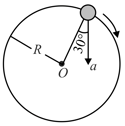A particle is rotating about a vertical axis in the horizontal plane such that the angular velocity of the particle about the axis is constant and is equal to 1 rad/s. Distance of the particle from axis is given by where t stands for time. The speed of the particle as a function of time is
Important Questions on Motion
If the kinetic energy of a particle of mass performing uniform circular motion in a circle of radius is find the acceleration of the particle.
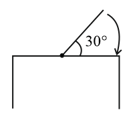
Two particles are moving on two concentric circles of radii and with equal angular speed At their positions and direction of motion are shown in the figure:
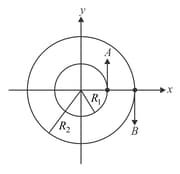
The relative velocity at is given by:
A mass moves in a circle on a smooth horizontal plane with velocity at a radius . The mass is attached to a string which passes through a smooth hole in plane as shown.
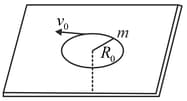
The tension in the string is increased gradually and finally moves in a circle of radius . The final value of the kinetic energy is:
A clock has a continuously moving second's hand of length. The average acceleration of the tip of the hand (in units of ) is of the order of :
Two parallel discs are connected by a rigid rod of length centrally. Each disc has a slit oppositely placed as shown in the figure. A beam of neutral atoms is incident on one of the discs axially at different velocities , while the system is rotated at angular speed of, , so that atoms only with a specific velocity emerge at the other end. Calculate the two largest speeds (in meter/second) of the atoms that will emerge at the other end.
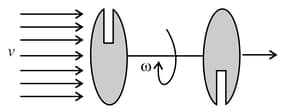
In the given figure, represents the total acceleration of a particle moving in the clockwise direction in a circle of the radius at a given instant of time. The speed of the particle is
